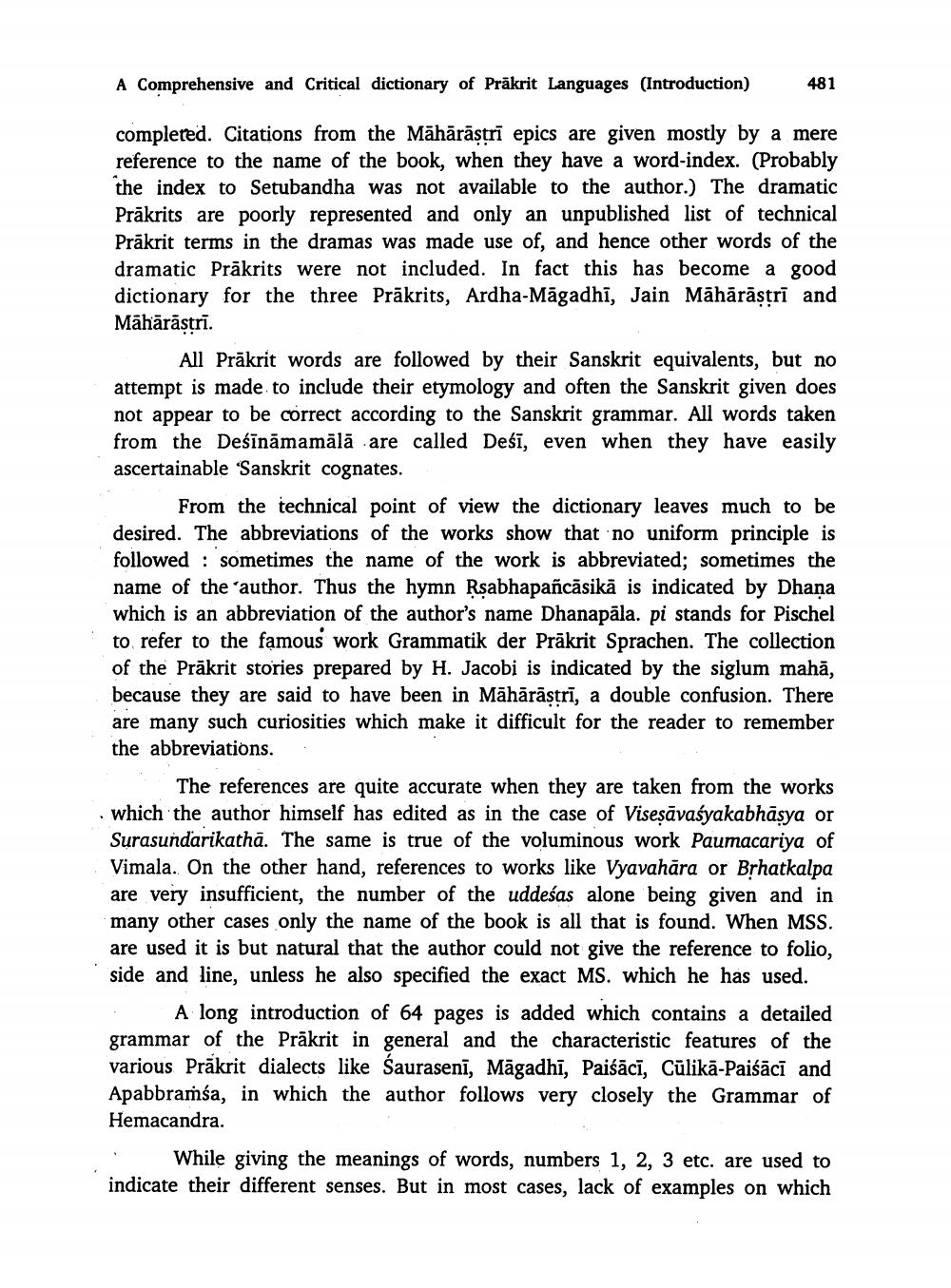________________
A Comprehensive and Critical dictionary of Prākrit Languages (Introduction)
481
completed. Citations from the Māhārāstrī epics are given mostly by a mere reference to the name of the book, when they have a word-index. (Probably the index to Setubandha was not available to the author.) The dramatic Prākrits are poorly represented and only an unpublished list of technical Prākrit terms in the dramas was made use of, and hence other words of the dramatic Prākrits were not included. In fact this has become a good dictionary for the three Prākrits, Ardha-Māgadhi, Jain Māhārāştri and Māhārāstrī.
All Prākrit words are followed by their Sanskrit equivalents, but no attempt is made to include their etymology and often the Sanskrit given does not appear to be correct according to the Sanskrit grammar. All words taken from the Deśīnāmamālā are called Desī, even when they have easily ascertainable Sanskrit cognates.
From the technical point of view the dictionary leaves much to be desired. The abbreviations of the works show that no uniform principle is followed : sometimes the name of the work is abbreviated; sometimes the name of the author. Thus the hymn Rsabhapancāsikā is indicated by Dhana which is an abbreviation of the author's name Dhanapāla. pi stands for Pischel to refer to the famous work Grammatik der Prākrit Sprachen. The collection of the Prākrit stories prepared by H. Jacobi is indicated by the siglum mahā, because they are said to have been in Māhārāstrī, a double confusion. There are many such curiosities which make it difficult for the reader to remember the abbreviations. .
The references are quite accurate when they are taken from the works · which the author himself has edited as in the case of Visesāvasyakabhāsya or
Surasundarikathā. The same is true of the voluminous work Paumacariya of Vimala. On the other hand, references to works like Vyavahāra or Brhatkalpa are very insufficient, the number of the uddeśas alone being given and in many other cases only the name of the book is all that is found. When MSS. are used it is but natural that the author could not give the reference to folio, side and line, unless he also specified the exact MS. which he has used.
A long introduction of 64 pages is added which contains a detailed grammar of the Prākrit in general and the characteristic features of the various Prakrit dialects like Saurasenī, Māgadhi, Paiśācī, Cülikā-Paiśācī and Apabbramsa, in which the author follows very closely the Grammar of Hemacandra.
While giving the meanings of words, numbers 1, 2, 3 etc. are used to indicate their different senses. But in most cases, lack of examples on which




